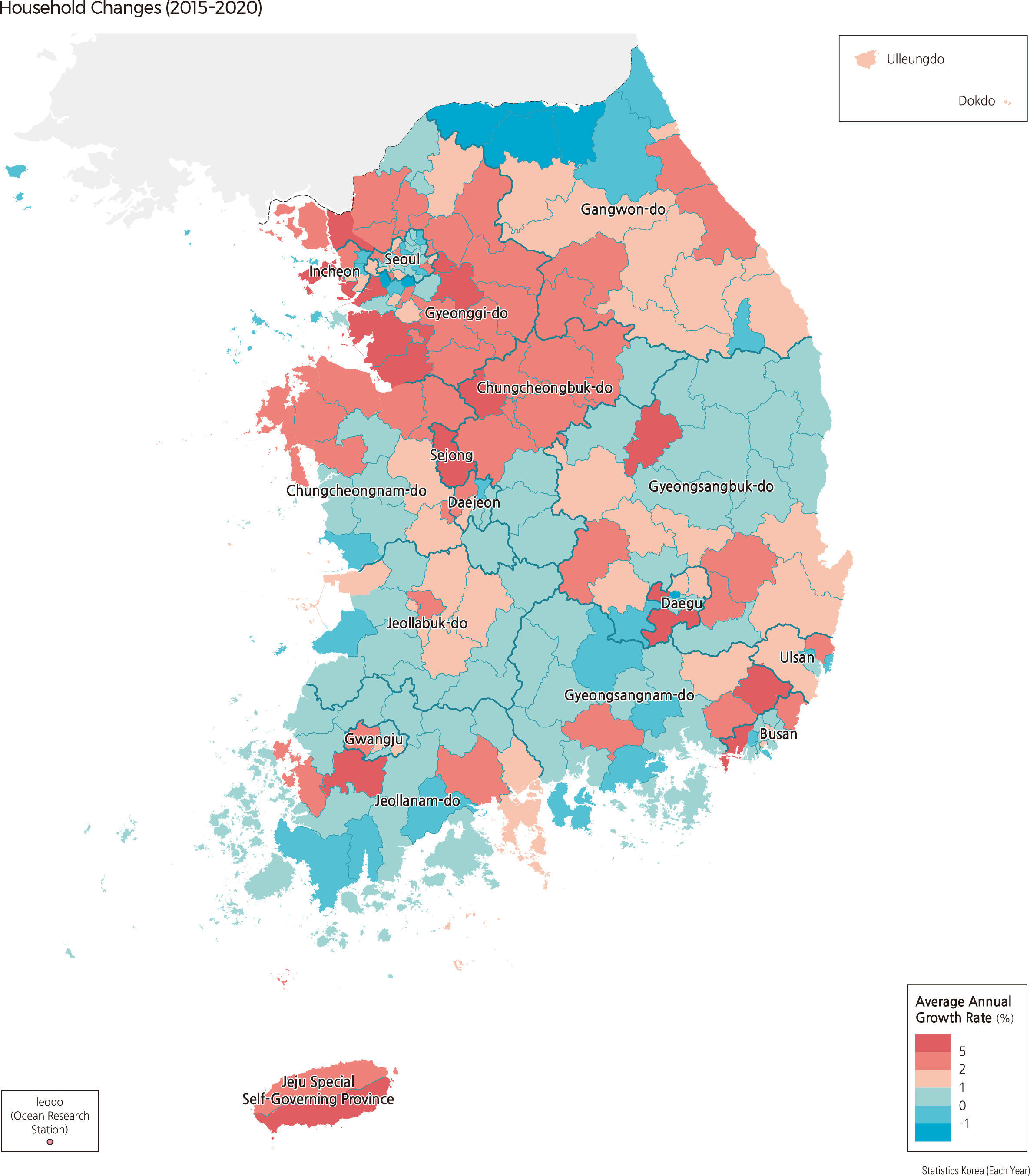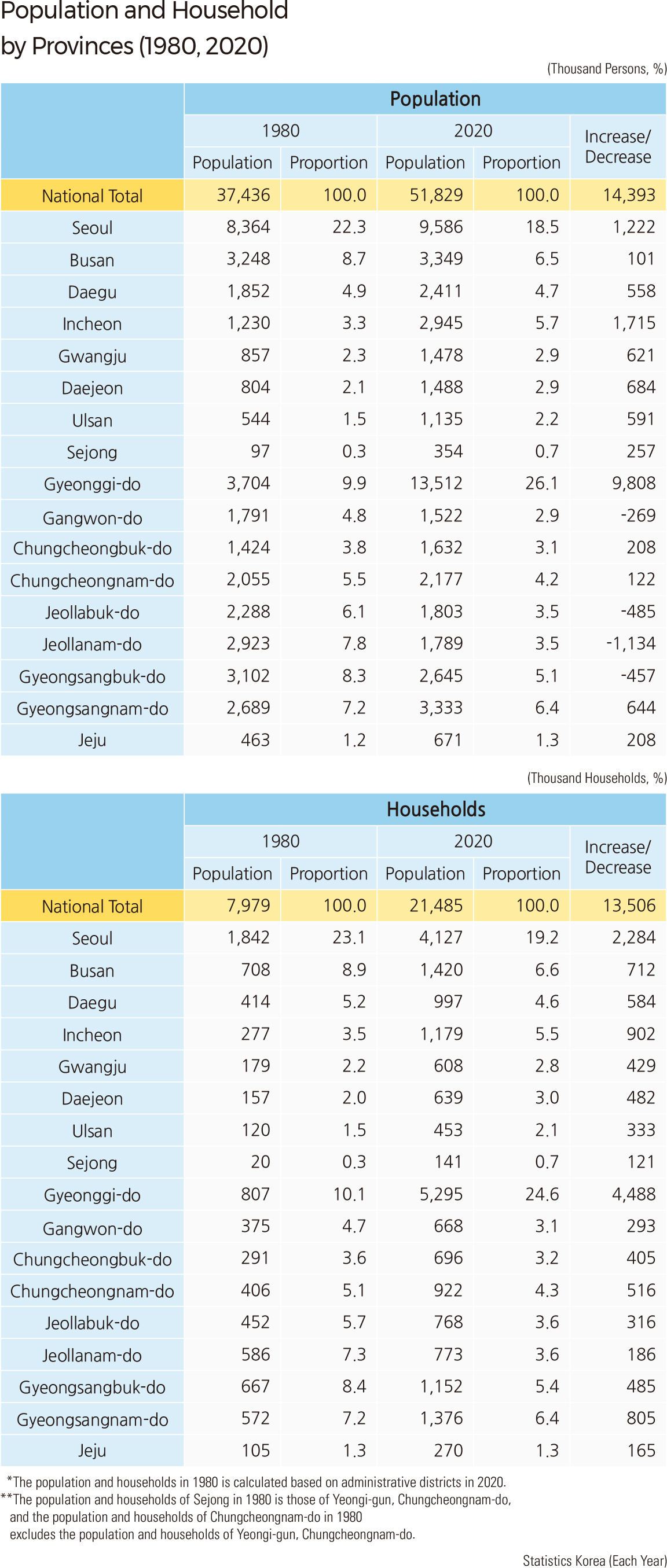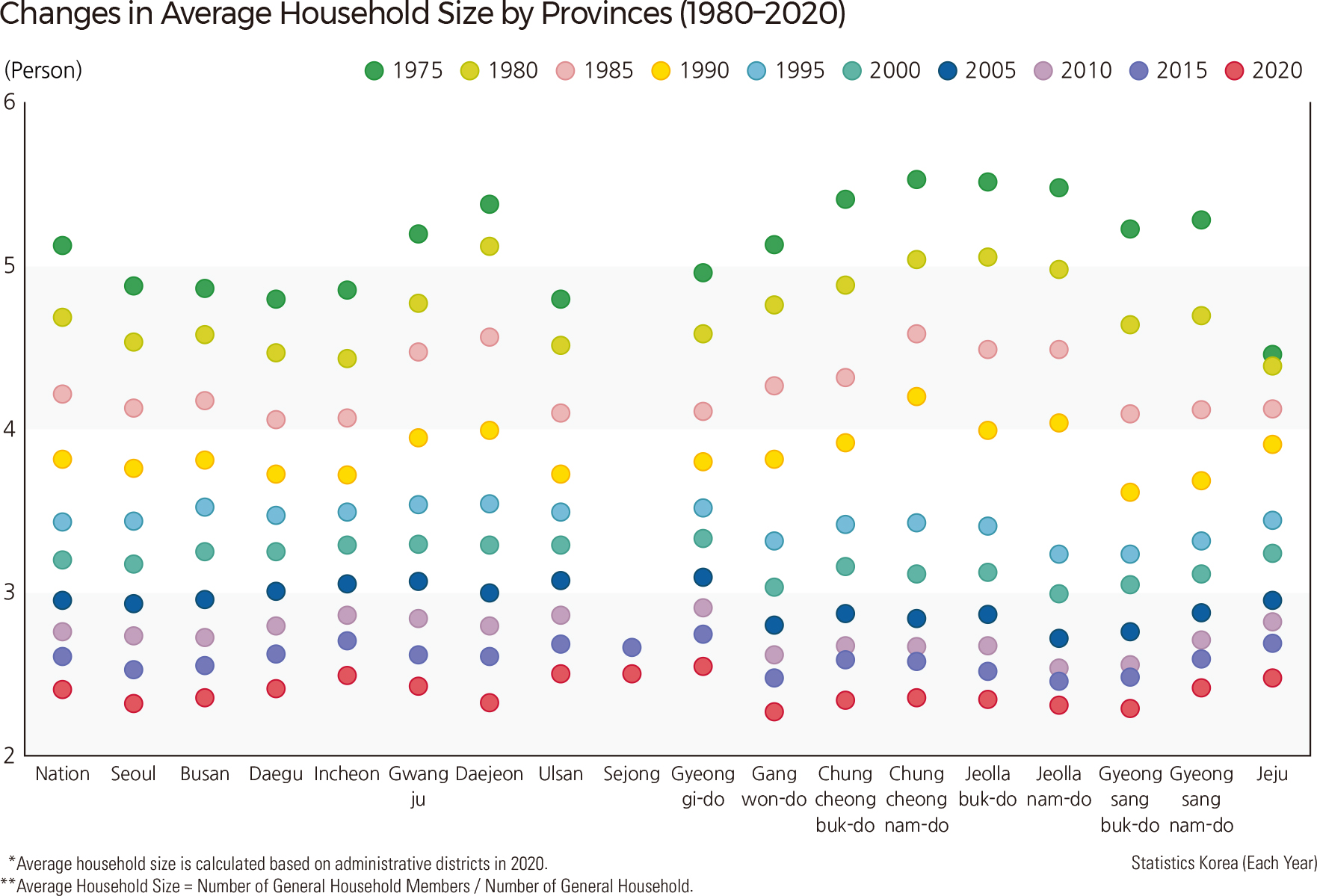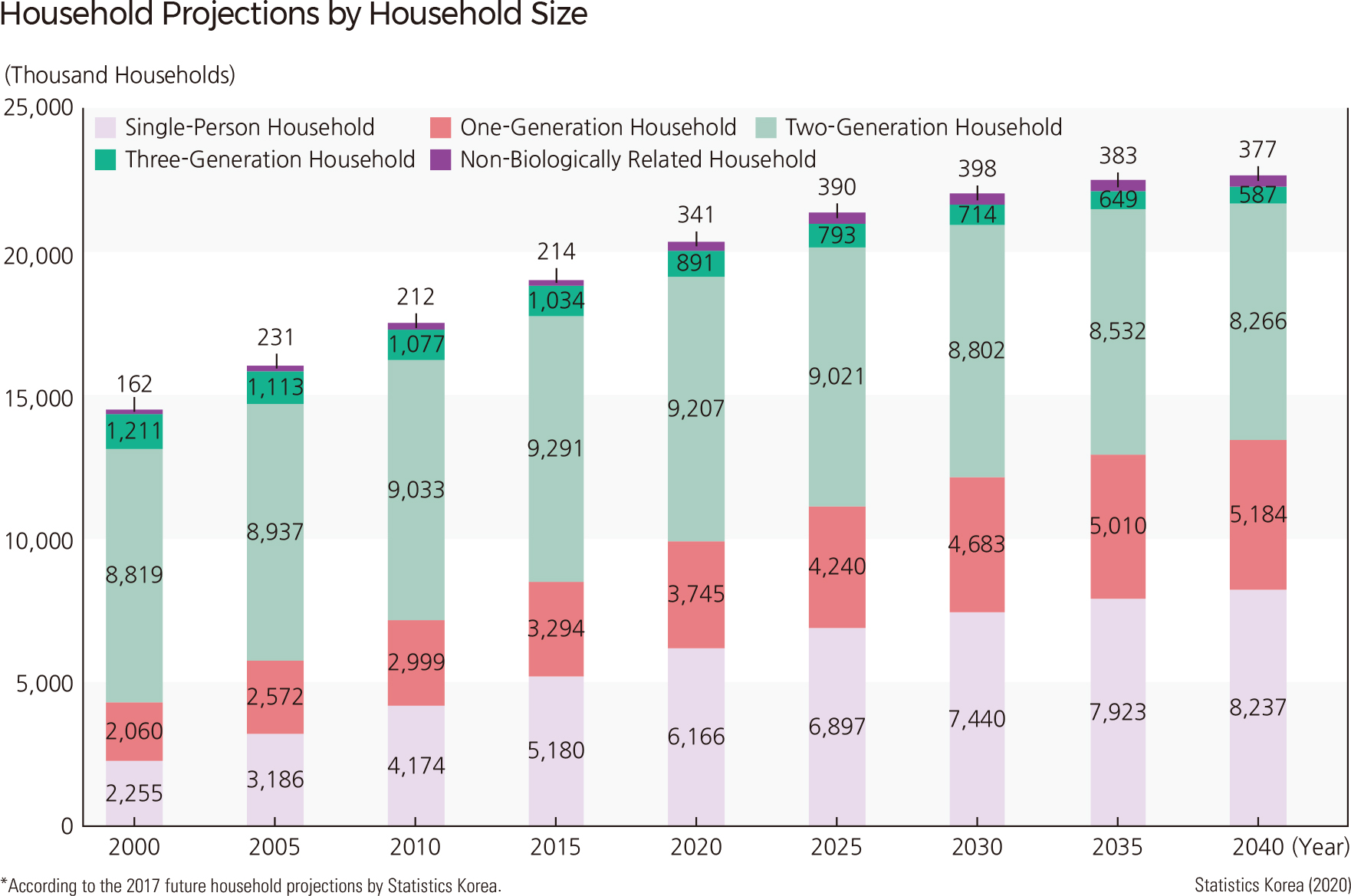English III 2021
A household is a living unit of one or more persons who share a dwelling. Households are divided into general, collective, and foreign households. As the population increases, the number of households also increases, but the number of households grows faster than the number of persons. As of 2020, there are 21.5 million households in Korea, and the growth rate of foreign households is the highest among households. In Korea, surveys on households are usually conducted only for general households. The number of persons who make up a household has changed over time. Households with six or more persons were most common in 1970, accounting for 44 percent of all households. As of 2020, among a total of 20.9 million households, single-person households (6.6 million households) were the largest and accounted for 32 percent of all households, while two-person households (5.9 million households) accounted for 28 percent. The number of households with two or fewer members was 12.5 million, or 60 percent of the general households. The average number of persons per household was 5.2 in 1970 but fell to 2.3 in 2020. The low birth rate, the aging population, and the increase in single-person households are problems in Korea and part of a larger global phenomenon. As a result, the average number of household members is also decreasing. Compared with OECD countries as of 2015, the average number of household members in Korea is similar to that of Spain and the United States. Most OECD countries have a lower average number of household members than Korea. Nordic countries such as Sweden have an even lower average number of household members. Furthermore, the proportion of single-person households in OECD countries exceeds 30 percent on average. Considering that the W is rapidly increasing in Korea, the average number of household members in Korea will continue to decrease.
The number of households is increasing very rapidly. From 2015 to 2020, the number of households increased in most areas of the country, except for rural areas, border areas, and old downtown areas. The annual average change in the number of households is very high, especially in new towns, such as Hanam-si in Gyeonggi-do (20.2%), Hwaseong-si in Gyeonggi-do (11.8%), Gimpo-si in Gyeonggi-do (9.0%), Siheung-si in Gyeonggi-do (6.9%), Sejong (16.9%), Gangseo-gu, Busan (10.9%), Dalseong-gun in Daegu (9.9%), and Jincheon-gun in Chungcheongbuk-do (7.4%). Changes in the population and number of households can be easily recognized by comparing them in 1980 and 2020 based on the 2020 administrative districts. Over the 40 years, the population increased by 14.4 million, and the number of households increased by 13.5 million, almost the same population growth. Moreover, the number of households increased even in the areas where the population decreased significantly, such as Jeollanam-do, Jeollabuk-do, Gyeongsangbuk-do, and Gangwon-do. From 1975 to 2020, the average number of household members continuously decreased in all regions, and the decrease in non-Seoul Metropolitan Areas, such as Chungcheongnam-do, Chungcheongbuk-do, Jeollanam-do, Jeollabuk-do, Gyeongsangnam-do, and Gyeongsangbuk-do, was significant. On the other hand, the decrease in the average number of household members was 1.99, the smallest in the country in Jeju Special Self-Governing Province. In 1975, Seoul, Busan, Daegu, Incheon, and Gyeonggi-do were the regions with a lower average number of households than the national average and a relatively greater number of nuclear families. The number of household members in the metropolitan areas was smaller than that in non-metropolitan provinces. On the contrary, in 2020, Seoul, Busan, and non-metropolitan provinces, such as Gangwon-do, Chungcheongnam-do, Chungcheongbuk-do, Jeollanam-do, Jeollabuk-do, and Gyeongsangbuk-do, were the regions with a lower average number of households than the national average. The average number of household members in non-metropolitan provinces is smaller than in metropolitan areas, except in Seoul and Busan. According to household estimates, the number of households will peak at 22.65 million in 2040 and will decrease thereafter. The proportion of single-person households will increase from 15.5 percent in 2000 to 36.4 percent in 2040. The proportion of two-generation households, which was the largest number in 2020, will decline from 60.8 percent in 2000 to 36.5 percent in 2040. The number of households with three or more generations will also decrease rapidly. In 2040, there will be 13.4 million single-person and one-generation households, accounting for 59.3 percent of the total households, resulting in a sharp decline in intergenerational communication. |



